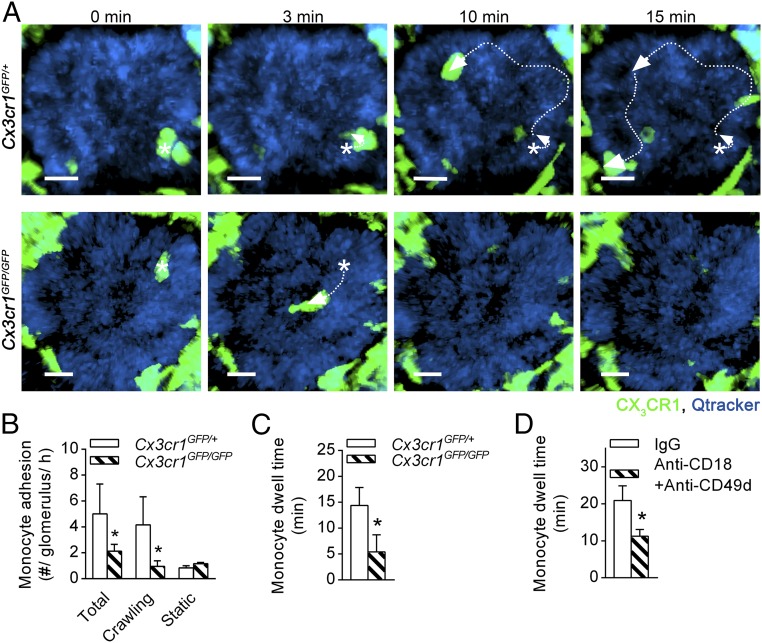Fig. 1.
Monocyte patrolling in uninflamed glomerular capillaries is dependent on CX3CR1 and β2 and α4 integrins. The role of surface receptors in monocyte trafficking within uninflamed glomerular capillaries was investigated in Cx3cr1GFP mice using intravital multiphoton microscopy. (A) Representative multiphoton image sequences of an untreated Cx3cr1GFP/+ mouse (Top) and Cx3cr1GFP/GFP mouse (Bottom) illustrating migration of a GFP+ monocyte (green) within glomerular capillaries (blue; labeled with Qtracker-655). Asterisks indicate starting position, and arrows indicate the path of migration. Time stamp is shown above the images. (Scale bar: 10 μm.) See also Movie S1. (B and C) The number of monocytes adhering in glomeruli per hour shown for total, crawling, and static cells (B) and monocyte dwell time (of total cells) (C) was assessed in untreated Cx3cr1GFP/+ (n = 8) and Cx3cr1GFP/GFP mice (n = 5). (D) Monocyte dwell time was compared in Cx3cr1GFP/+ mice pretreated with anti-CD18 and anti-CD49d blocking antibodies together (n = 4), or the respective isotype controls (n = 6). Data are presented as mean ± SEM; *P < 0.05 vs. corresponding control group.

